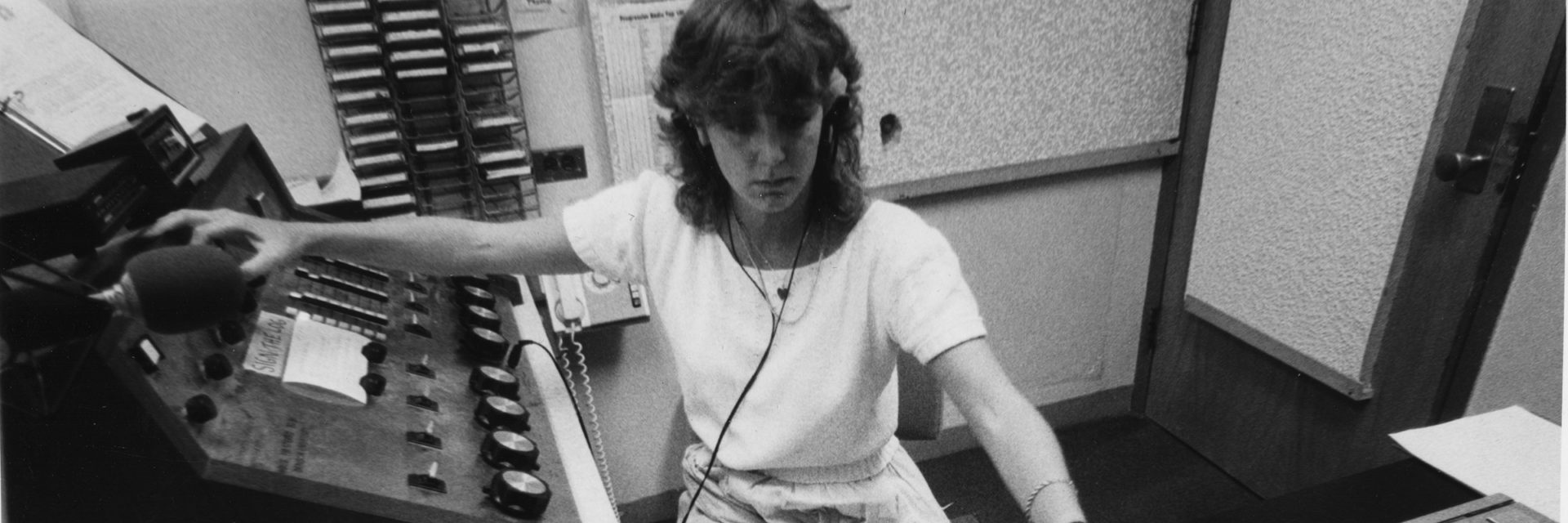Twenty years before its sly nickname was adopted in the 1970s, WDUB was founded as a radio station by and for students. Only one of those things has changed in nearly 60 years: radio has become internet streaming as of this past fall. But don’t worry, the staff decided (thank you, staff) not to call it “Denison Live Stream” or Big Red anything, but, officially, simply, and perfectly legally, WDUB-The Doobie.
Take a moment to mourn if you need to. None of us wants to hear that something we love has changed. It was very, very cool to have our own radio station with our own spot on the dial, regulated by the Federal Communications Commission (serious) and broadcasting through the airwaves. Cool like driving a classic car—old technologies that still work have a great feeling, a sense of romance. But like a classic car, it might not take you as far as you want and need to go.
When WDUB made its first broadcast on November 12, 1953, it reached most of the buildings on campus and even as far as some of the sorority houses below, but no further. That’s because it was using a “carrier current,” which is to say it traveled directly through the electrical wiring of buildings to which it was physically connected. Some of our good friends like the late Senator Richard Lugar ’54 and Don Shackelford ’54 were the primary movers in creating the station, and they were there to hear the “Star-Spangled Banner” that first morning at 7:00, followed by “The Orangutan Hour” starring Don and his friends.
Radio was the center of entertainment in most American households when these men were born, but it was already being sidelined by the time they got to college by a new technology, television. Dramas, variety shows and game shows were moving there, leaving radio with music, sports, and the news. Radio was perfect for communicating on a small campus where television or outside radio signals never did reach very well. Over time, WDUB moved to AM broadcast, then to FM, and then FM stereo in 1975. There were also increases in wattage in the 1980s and ’90s, though the broadcast rarely got far past Granville.
The station has always been changing. The best way to think of it now is “streaming radio” without radio’s particular drawbacks. FCC regulations are rigorous, and they come with stiff fines if, for example, offensive lyrics slip through or paperwork isn’t properly submitted. It’s a lot to keep up with. More to the point, you aren’t likely to find a conventional radio in a student dorm room today. Radios are still in cars, but cars were out of range of WDUB’s signal about five minutes after leaving campus. In some ways, like the shift to television, the technology of radio is no longer aligned with where the audience has been moving.
The WDUB transmitter and related equipment in Knapp were sold to WOSU Public Media Network last fall, creating another affiliate station to extend the reach of WOSU’s classical music and news broadcasting out of Columbus. The new and provocatively named WOSX went on the air March 3rd at 91.1 on the FM dial. Its operations have nothing to do with Denison now, but the deal does include a commitment to professional internships for Denison students, across WOSU’s stations.
Now any Denison student can listen to the Doobie live while walking down chapel walk or a street in Copenhagen. A mother in Shanghai can listen to her son’s program in Granville, Ohio, on Wednesday mornings. Alumni can tune in anywhere in the world where they have internet access. That’s doobieradio.com. Listen now.

